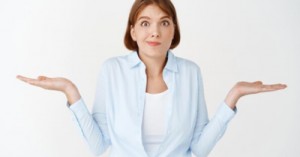Floorbook is a documentation approach that uses a large book with blank pages for children to record different aspects of their learning in small groups or as a whole group. The following article provides information on the Features Of A Floorbook, Child Centred Approach, How Educators Can Use Floorbooks and more.
It is called a ‘floor book’ because the book is used on the floor so that the children have close access to it. It explores shared thinking in a more formal way so that children recall each other's ideas and record them through writing, drawing and photographs.
Features of a Floorbook
Floorbooks explore shared thinking in a more formal way so that children recall each other's ideas and record them through writing, drawing and photographs. Features include:
- Children’s ideas and thoughts
- Open-ended questions - Questions are posed as a part of a conversation and are designed to stimulate thought and not test knowledge.
- Higher order thinking
- Depth of learning - Collating children’s ideas in a book form ensures that the group focus on continuity and progression over longer blocks of time. Collaborative learning - floor books are designed to be a large size to allow children to gather around them and engage in a learning dialogue around the content of the pages.
- A variety of methods to represent thinking - adult scribing the questions and conversations, children’s drawings, photos, and adult observations.
- Collates child-centred ideas that are taken forward by the early years staff - the floor book is an integral part of planning.
- Children draw/write on separate pieces of paper which the adult glues into the book
- Notes taken from group time can be typed and glued into the floorbook
- A conversation with an individual child can be included in the book
- The books are available to children at all times.
Child-Centred Approach
What makes Floorbooks a particularly useful way of documenting is that it is entirely learner-led. Children draw pictures of what interests them or is related to what they have been learning; they put stickers or cut-out pictures and then glue them on the book; they write about their favourite topics, objects or feelings. Such images and drawings make children’s ideas clear and visible while their writings help them refine their own concepts.
Uses Collaboration
By its very nature, a Floorbook is a shared document and hence invites collaboration and exchange of ideas. As children sit on the floor and work together on the same book, they discuss aspects of the topic at hand, recount memories, ask questions, and add to or even content each other’s opinions and observations. Such a give-and-take process is not only stimulating for young minds and teaches some very valuable social and interpersonal skills through negotiating, taking turns and working in groups.
Comprehensive Nature
Since Floorbooks can be used over an extended period of time, they evolve into comprehensive learning documents. Children use it to explore a concept or topic over an extended period of time, thus promoting a deeper level of learning. It can also be used to reinforce previous learning or anticipate new areas of exploration even as an educator can invite different children to contribute at different stages of learning a concept, keeping the process varied and interesting.
How Educators Can Use Floorbooks
While using Floorbooks to document children’s learning:
- begin by assessing what children know already
- be ready to scribe your young learners’ comments, ideas and inputs
- use provocations to get your learners discussing, for example, say, “Tell me about this blue caterpillar that you have drawn”; such open-ended questions will help children talk about related concepts like birth, growth, flowering, change and so on.
- identify possible new learning; for example, if children have been finding out more about butterflies, see if you can explore other objects that ‘fly’ like, clouds or aeroplanes, and then perhaps the water cycle or air pressure
- mark progression in children’s conceptual understanding or changes in ideas by using different colour sticky notes in the book
- wrap up the learning with a graphic organizer perhaps on the last page of the book for an easy visual representation of the learning topics, processes and interconnections.
Thinking and talking floor books create a child-centred approach, which records the evidence of the process of play and the learning that comes from it.
- Updating the floor book in a consultation with children is important because:
- It creates a closer match between the child and the curriculum they are experiencing
- It builds self-esteem and positive attitudes when the learner is involved in the decision making
- It increases intrinsic motivation, which stays with a child throughout life.
- Children have a right to be treated with respect by valuing their thoughts and opinions.
When using a floorbook is designed to create a balance between intentional teaching and child autonomy and enables children to be engaged and develop the dispositions for lifelong learning. Floorbooks allow educators to consult deeply with children during the planning and documentation process.
References:
Claire Wardens Floorbook
Alison Trew and Caroline Skerry's "Floorbooks", Why and How







 As an Educator in Australia, your pay rate falls under the Children’s Services Award 2010. This award states the minimum amount that an employer can
As an Educator in Australia, your pay rate falls under the Children’s Services Award 2010. This award states the minimum amount that an employer can When working as a qualified Early Childhood Teacher (with a university degree) within a service, your rate of pay will come from the Educational Services
When working as a qualified Early Childhood Teacher (with a university degree) within a service, your rate of pay will come from the Educational Services When working as a Diploma Qualified Educator your pay rate is from the Children's Services Award 2010. This Award states your minimum rate of pay
When working as a Diploma Qualified Educator your pay rate is from the Children's Services Award 2010. This Award states your minimum rate of pay When working as a Cert 3 Qualified Educator, your pay rate is from the Children's Services Award 2010. This Award states your minimum rate of
When working as a Cert 3 Qualified Educator, your pay rate is from the Children's Services Award 2010. This Award states your minimum rate of Educational Leaders play a crucial role in their early childhood service by ensuring that the educational program aligns with best practices and supports the holistic
Educational Leaders play a crucial role in their early childhood service by ensuring that the educational program aligns with best practices and supports the holistic In early childhood education and care, ratios are more than a technicality—they are a frontline safeguard. Every child deserves responsive supervision, emotional connection, and developmental
In early childhood education and care, ratios are more than a technicality—they are a frontline safeguard. Every child deserves responsive supervision, emotional connection, and developmental With the new national child safety reforms kicking in on 1 September 2025, early childhood services like yours have a real opportunity to lead the
With the new national child safety reforms kicking in on 1 September 2025, early childhood services like yours have a real opportunity to lead the Here’s a comprehensive Mobile Phone and Smart Watch Policy tailored for early childhood education and care (ECEC) services in Australia, aligned with the latest 2025
Here’s a comprehensive Mobile Phone and Smart Watch Policy tailored for early childhood education and care (ECEC) services in Australia, aligned with the latest 2025 The Sea of Fish Challenge is a national initiative that invites children, educators, families, and communities to create and display fish artworks as a symbol
The Sea of Fish Challenge is a national initiative that invites children, educators, families, and communities to create and display fish artworks as a symbol Across the early childhood education and care sector, educators are sounding the alarm: current staffing ratios are insufficient to deliver safe, meaningful, and developmentally appropriate
Across the early childhood education and care sector, educators are sounding the alarm: current staffing ratios are insufficient to deliver safe, meaningful, and developmentally appropriate


